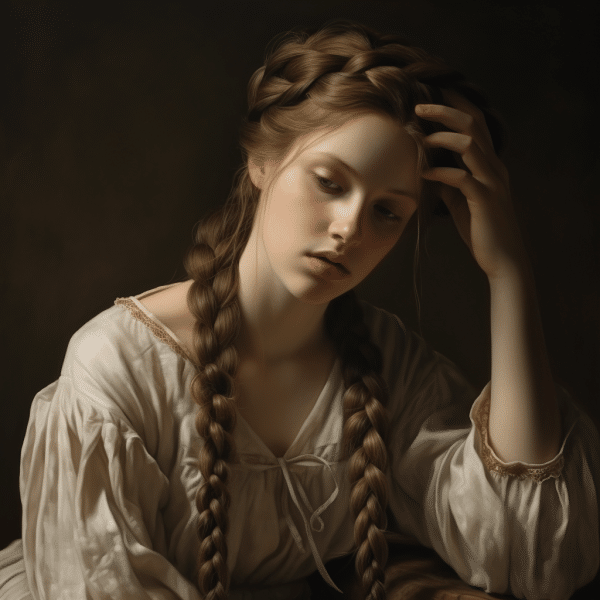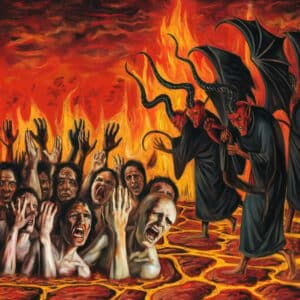

Braiding and Biblical Perspective Mothers all across the globe have been braiding their girls’ hair for ages, whether it be in box braids, plaits, cornrows, or any other style. Braided hairstyles are a stunning example of art and one of the most protective, especially for natural hair.
Is it a sin to braid your hair? This is one of the often-asked questions relating to braided hair today. The gist of this inquiry is that braiding your hair is not a sin. However, some claim that hair braiding is wrong by citing biblical texts.
In this post, we’ll go through what the Bible says about braided hair and explain why doing so is not wrong.
Is It a Sin to Braiding and Biblical Perspective?
In short, braiding your hair is not a sin as long as you are not trying to attract attention to yourself in a way that denigrates others. A quick and effective approach to styling one’s hair is using braids.
Many people have long battled with this issue: mixing universal principles with examples relevant to a particular culture.
The apostles advise Christians to cultivate a compassionate, modest, and humble disposition in 1 Timothy 2:9–10 and 1 Peter 3:3–4. A noble goal to pursue, yes? We aspire to be humble and self-sacrificing like Jesus.
The apostles used instances of women who appeared to overdo vanity and ornamentation to draw attention to themselves from their society.
Churchmen have since taken these illustrations out of context and turned them into regulations. They assert that God disapproved of women who wore jewelry or braided their hair, ignoring the text’s main point that one should not let an obsession with one’s appearance overshadow morality.
What a case of misunderstanding! The way you present yourself may be a sign of pride in appearance, but the real issue is a problem of the heart that affects human beings equally. Men who criticize women’s beauty are frequently also tremendously attention-seeking, if not in their clothing, appearance, or vehicles, then at least in their pride, bossiness, and competitiveness.
Don’t let anyone rob you of the “liberty which we have in Christ Jesus”(Galatians 2:4) if braiding is the greatest way to meet your aesthetic and practical aims.
Popular Braiding Styles and Their Origin
Take a look at six popular braiding styles and their origin:
Cornrows
Everyone knows from history that cornrows first appeared in Africa, but many people still don’t understand why? Most believe that the exquisite hair braiding revealed which league you belonged to.
Women have had cornrows since at least 3000 B.C., while men have had them since the nineteenth century, especially in Ethiopia.
Cornrows, which are still widely worn in Sudan, West Africa, and the Horn of Africa (Djibouti, Somalia, Eritrea, and Ethiopia), can denote one’s wealth, kinship, marital status, age, religion, and ancestry.
They were also a way of expressing one’s individuality. Both human beings utilized glass, shells, corals, twigs, fresh flowers, and other materials to beautify their cornrows and reflect their personalities.
Ghana Braids
Ghana braids, also known as fishbone braids or banana braids in modern times, have their origins in Africa. The earliest examples of Ghana braids may be found in carvings and hieroglyphics from around 500 BC, demonstrating the importance of hair to Africans.
For many years, Ghana braids played a significant role in many distinct Ghanaian ethnic, social, religious, and cultural traditions.
The start and finish of Ghana braiding set it apart from traditional cornrowing. Every braid begins small, soft, and natural before becoming considerably thicker and fuller in the middle and tapering off at the ends.
Fulani Braids
Braiding and Biblical Perspective The Fulani, or Fula league, inhabits the Sahel region and West Africa and is the world’s biggest nomadic pastoral group.
The Fulani hairstyle includes long hair arranged in five long braids, either hanging or looped, with a coiffure in the center of the head. This is a very traditional hairstyle for women.
Goddess Braids
Goddess braids have a long history dating back to ancient Africa. They stood for artistic expression, originality, accuracy, and a fresh take on fashion.
Box Braids
In South Africa, box braids date as far back as 3500 B.C. The box braids we know and like today aren’t all that dissimilar from the chin-length bob braids worn by Nile Valley women more than 3,000 years ago or the Eembuvi braids of Namibia.
Box braid installation, materials, and labor costs were high. A woman who could afford to sit for several hours while donning her crown would have been interpreted as being a woman of wealth.
Depending on how thick and lengthy you wanted your braids to be, installing them can take anywhere from four to eight hours and takes both accuracy and patience.
Faux Locs and Dreadlocks
Hair is a sign of age, stage in life, and marital status for the Himba league in Namibia’s northwest. Hair is frequently dreadlocked using a mixture of butter, goat hair, and crushed ochre. Dreadlocks are now often made with Indian hair extensions that have been bought in neighboring towns.

Final Take
It is not a sin to braid your hair. However, you should avoid doing it to draw attention since so doing is wrong, according to the Bible.







